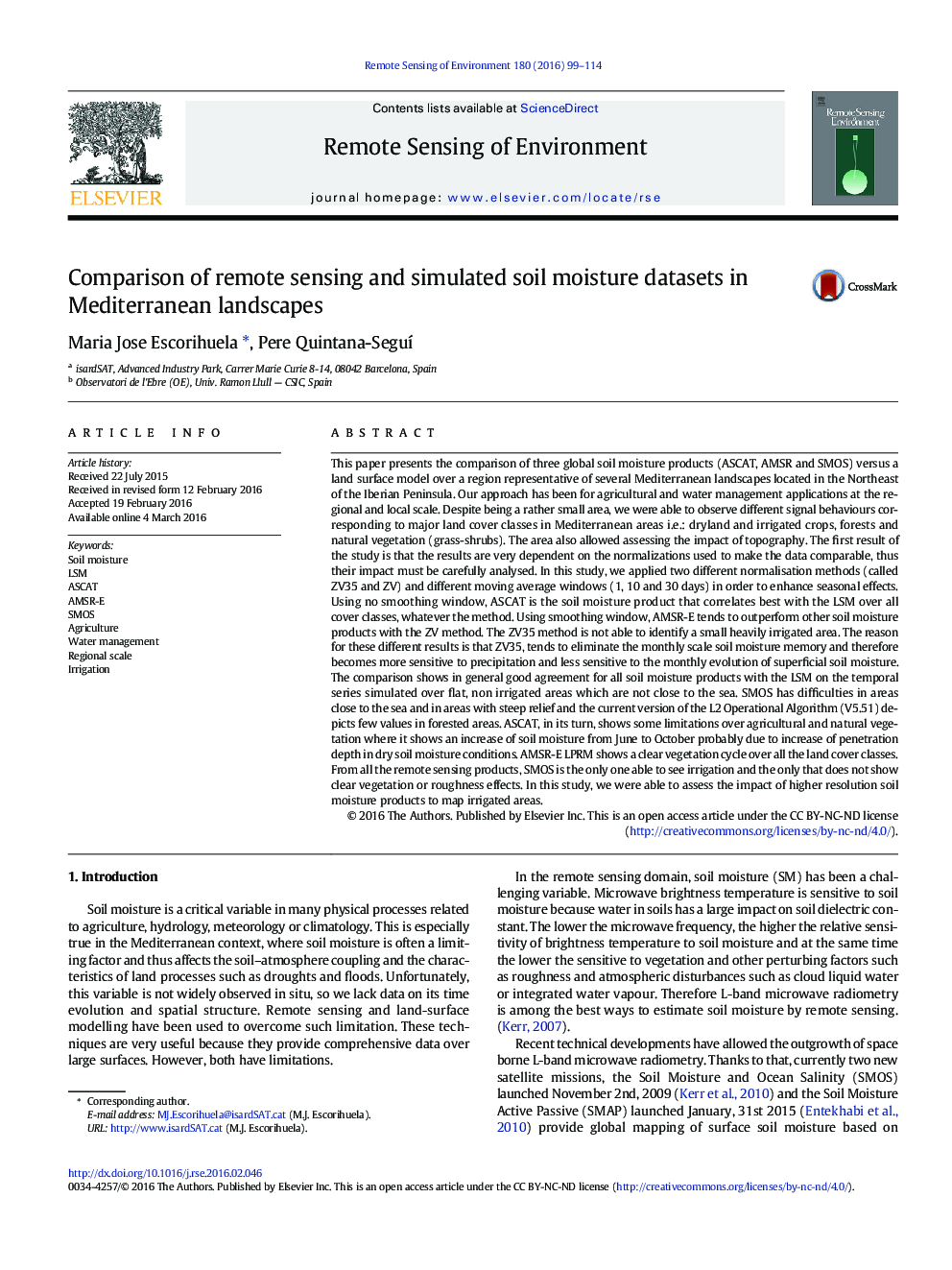| کد مقاله | کد نشریه | سال انتشار | مقاله انگلیسی | نسخه تمام متن |
|---|---|---|---|---|
| 6345152 | 1621220 | 2016 | 16 صفحه PDF | دانلود رایگان |
- Analysis of 3 global SM products in terms of land cover in a Mediterranean region.
- ASCAT correlates better with LSM indistinctly of normalisation
- AMSR-E LPRM soil moisture shows correlation with vegetation cycle.
- SMOS is the only one able to see irrigation
- Higher resolution SM is needed in Mediterranean landscapes
This paper presents the comparison of three global soil moisture products (ASCAT, AMSR and SMOS) versus a land surface model over a region representative of several Mediterranean landscapes located in the Northeast of the Iberian Peninsula. Our approach has been for agricultural and water management applications at the regional and local scale. Despite being a rather small area, we were able to observe different signal behaviours corresponding to major land cover classes in Mediterranean areas i.e.: dryland and irrigated crops, forests and natural vegetation (grass-shrubs). The area also allowed assessing the impact of topography. The first result of the study is that the results are very dependent on the normalizations used to make the data comparable, thus their impact must be carefully analysed. In this study, we applied two different normalisation methods (called ZV35 and ZV) and different moving average windows (1, 10 and 30Â days) in order to enhance seasonal effects. Using no smoothing window, ASCAT is the soil moisture product that correlates best with the LSM over all cover classes, whatever the method. Using smoothing window, AMSR-E tends to outperform other soil moisture products with the ZV method. The ZV35 method is not able to identify a small heavily irrigated area. The reason for these different results is that ZV35, tends to eliminate the monthly scale soil moisture memory and therefore becomes more sensitive to precipitation and less sensitive to the monthly evolution of superficial soil moisture. The comparison shows in general good agreement for all soil moisture products with the LSM on the temporal series simulated over flat, non irrigated areas which are not close to the sea. SMOS has difficulties in areas close to the sea and in areas with steep relief and the current version of the L2 Operational Algorithm (V5.51) depicts few values in forested areas. ASCAT, in its turn, shows some limitations over agricultural and natural vegetation where it shows an increase of soil moisture from June to October probably due to increase of penetration depth in dry soil moisture conditions. AMSR-E LPRM shows a clear vegetation cycle over all the land cover classes. From all the remote sensing products, SMOS is the only one able to see irrigation and the only that does not show clear vegetation or roughness effects. In this study, we were able to assess the impact of higher resolution soil moisture products to map irrigated areas.
Journal: Remote Sensing of Environment - Volume 180, July 2016, Pages 99-114
